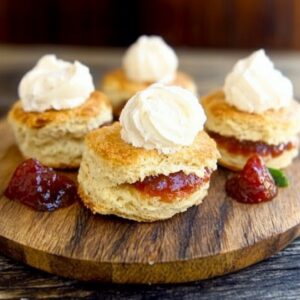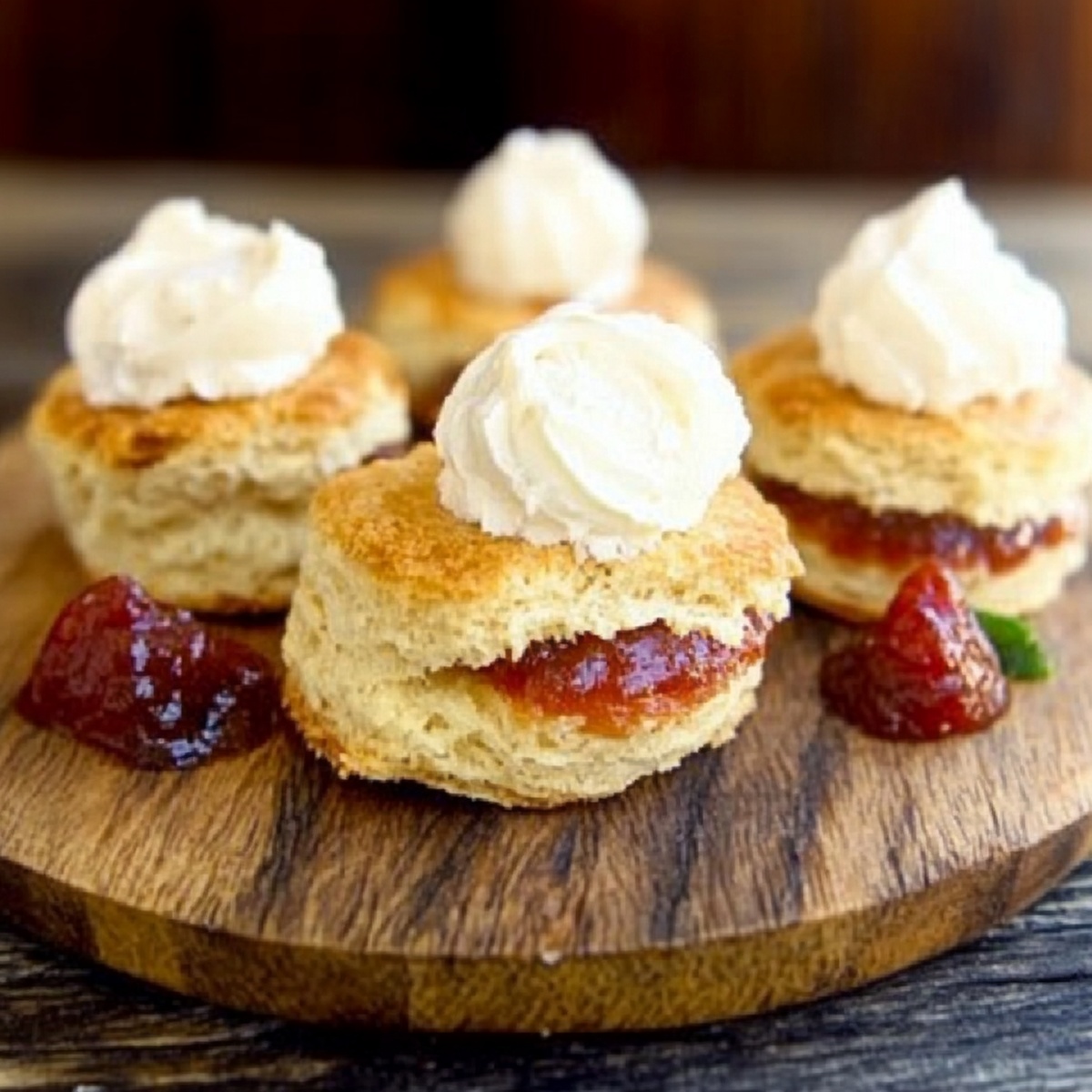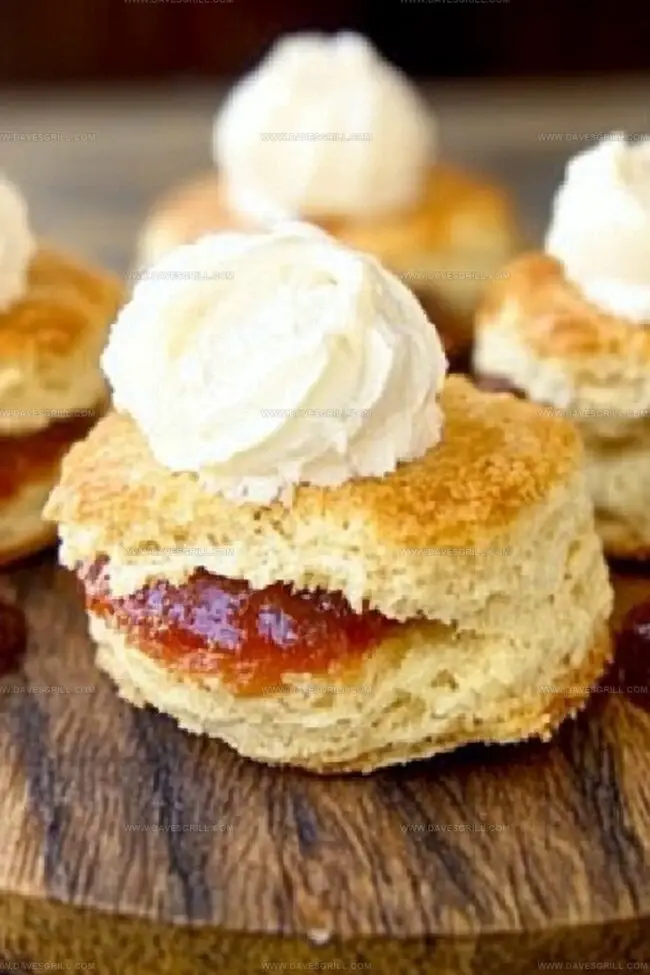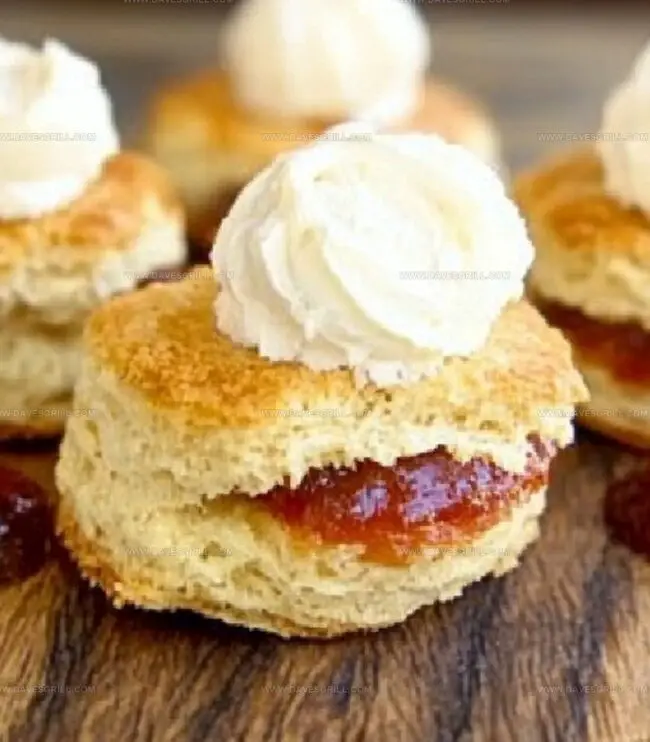The Perfect Classic English Scones Recipe for Teatime Bliss
Crisp mornings call for warm, buttery classic english scones that drift through your kitchen like whispered comfort.
Tea enthusiasts understand these delicate pastries represent more than just a quick bite.
Memories of cozy afternoons in quaint British cafes dance between each crumbly layer.
Rich traditions blend seamlessly with simple ingredients, creating magic on your plate.
Soft, tender textures promise a delightful experience that connects you to generations of baking wisdom.
Curious bakers will find joy in mastering this quintessential treat that celebrates simplicity and elegance.
Grab your apron and let’s transform ordinary moments into extraordinary culinary memories.
Why Classic English Scones Are A Must-Bake Treat
What You’ll Use For Classic English Scones
Flour Base:Seasoning Group:Moisture and Binding Ingredients:Optional Add-In:Finishing Touches:How To Make Classic English Scones With Ease
Step 1: Prepare Baking Station
Warm up your oven to 425F (220C). Grab a baking sheet and line it with parchment paper for smooth baking.
Step 2: Create Dry Foundation
Grab a spacious mixing bowl. Combine these dry ingredients:Whisk everything together until perfectly blended.
Step 3: Incorporate Butter
Toss in cold, cubed butter. Use your fingertips or a pastry cutter to massage butter into the flour mixture. Keep working until the texture looks like rough, sandy crumbs.
Step 4: Blend Wet Components
In a separate small bowl, mix together:Pour this liquid mixture into the flour blend. Stir gently until ingredients just come together. If desired, fold in dried fruit like raisins or currants.
Step 5: Shape Delicate Dough
Transfer dough onto a lightly floured surface. Softly knead 2-3 times to help ingredients unite. Be careful not to overwork the dough. Gently pat into a round disc about 1-inch thick.
Step 6: Cut Scone Shapes
Use a round cutter to create beautiful scone circles. Press downward without twisting to ensure perfect rising. Reassemble leftover dough and repeat cutting process.
Step 7: Bake To Golden Perfection
Arrange scones on prepared baking sheet. Brush tops with a light layer of milk or cream. Slide into preheated oven and bake 12-15 minutes until tops turn beautiful golden brown.
Step 8: Serve Delightfully
Allow scones to cool slightly. Serve warm alongside clotted cream, soft butter, and your favorite jam. Enjoy your classic English treat!
Helpful Tips For Classic English Scones
Best Way To Store Classic English Scones
Tasty Pairings With Classic English Scones
Classic English Scones Variations To Try
FAQs For Classic English Scones
English scones are unique because they’re less sweet, have a tender, crumbly texture, and are traditionally served with clotted cream and jam. Unlike American biscuits, they’re lighter and more delicate.
Absolutely! You can use two knives, a fork, or even your fingertips to cut the butter into the flour. The key is keeping the butter cold and working quickly to maintain small butter chunks that create a flaky texture.
Overworking the dough develops gluten, which makes scones tough and dense instead of light and tender. Gently mix until just combined and knead minimally to keep the scones soft and crumbly.
Look for a golden-brown top and a slight rise. They should be firm to the touch but not hard. The edges will be slightly crisp, and the center should look set but still soft.
Print
Classic English Scones Recipe
- Total Time: 30 minutes
- Yield: 8 1x
Description
Golden, buttery Classic English Scones rise to perfection with their delicate crumb and rich heritage. Serve these tender treats alongside clotted cream and jam for an authentic British tea-time experience that will transport you directly to the countryside.
Ingredients
Dry Ingredients:
- 2 cups (250 grams) all-purpose flour
- 1 tablespoon baking powder
- ¼ teaspoon salt
- ¼ cup (50 grams) granulated sugar
Wet Ingredients:
- 1 large egg
- ½ cup (120 milliliters) whole milk, plus extra for brushing
- ¼ cup (60 milliliters) heavy cream or plain yogurt
Fat Ingredient:
- 6 tablespoons (85 grams) cold unsalted butter, cubed
Optional Add-in:
- ½ cup currants, raisins, or sultanas
Instructions
- Prepare the baking environment by heating the oven to a crisp 425F (220C) and lining a baking sheet with parchment paper for optimal scone performance.
- Create a powdery foundation by combining flour, baking powder, salt, and sugar in a spacious mixing bowl, whisking them together to ensure even distribution.
- Introduce cold, cubed butter to the dry ingredients and delicately massage with fingertips or a pastry cutter until the mixture transforms into a texture resembling coarse, sandy crumbs.
- Craft a liquid blend by whisking milk, cream, and egg in a separate vessel, then gently integrate into the flour mixture. If desired, carefully fold in dried fruit to enhance flavor complexity.
- Transfer the delicate dough onto a lightly dusted surface and tenderly knead 2-3 times, just enough to coalesce the ingredients without compromising the scones’ potential for lightness.
- Shape the dough into a robust 1-inch thick round, then utilize a precise 2½-inch circular cutter to extract perfectly formed scones. Apply downward pressure without twisting to maintain structural integrity.
- Arrange the cut scones on the prepared baking sheet and delicately brush their surfaces with a thin layer of milk or cream to achieve a golden, appetizing finish.
- Slide the scones into the preheated oven and bake for 12-15 minutes, watching for a rich, amber coloration and substantial rise.
- Allow the scones a brief moment to cool, then serve while still warm, accompanied by luxurious clotted cream, soft butter, and vibrant jam for a quintessential British teatime experience.
Notes
- Flour Flexibility: Swap all-purpose flour with whole wheat or gluten-free alternatives for different dietary needs without compromising the tender texture.
- Butter Temperature Trick: Keep butter extremely cold and work quickly to ensure flaky, light scones with perfect layered consistency.
- Handling Technique: Minimal mixing prevents tough scones – stop stirring the moment ingredients combine to maintain a delicate, soft crumb.
- Flavor Customization: Experiment with sweet or savory additions like herbs, cheese, chocolate chips, or dried fruits to transform the classic recipe into unique variations.
- Prep Time: 15 minutes
- Cook Time: 15 minutes
- Category: Breakfast, Snacks, Desserts
- Method: Baking
- Cuisine: English
Nutrition
- Serving Size: 8
- Calories: 250
- Sugar: 7g
- Sodium: 180mg
- Fat: 12g
- Saturated Fat: 7g
- Unsaturated Fat: 4g
- Trans Fat: 0g
- Carbohydrates: 33g
- Fiber: 1g
- Protein: 4g
- Cholesterol: 40mg




Dave Mitchell
Founder & Chief Recipe Developer
Expertise
Education
Asheville-Buncombe Technical Community College
Associate of Applied Science in Culinary Arts
Focus: Comprehensive training in culinary techniques, kitchen management, and menu planning, with a special emphasis on grilling and outdoor cooking.
Dave Mitchell is the heart behind Daves Grill, a cook, writer, and lover of all things grilled. He studied Culinary Arts at Asheville-Buncombe Technical Community College and spent years cooking, testing, and sharing recipes that actually work.
Dave started Daves Grill to keep things simple: one great recipe at a time. His food is bold, easy to follow, and made for real people with regular kitchens. From juicy steaks to quick sides, Dave’s recipes bring the heat without the hassle.